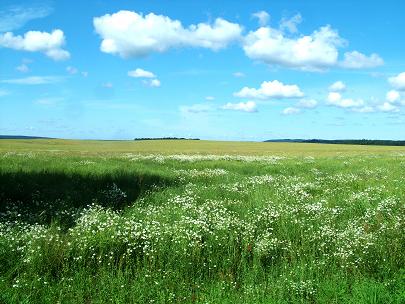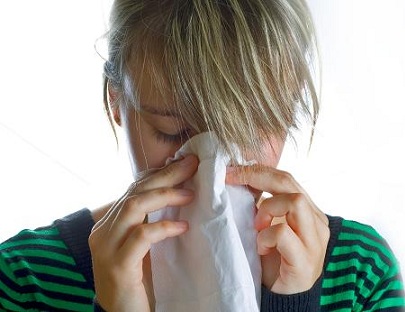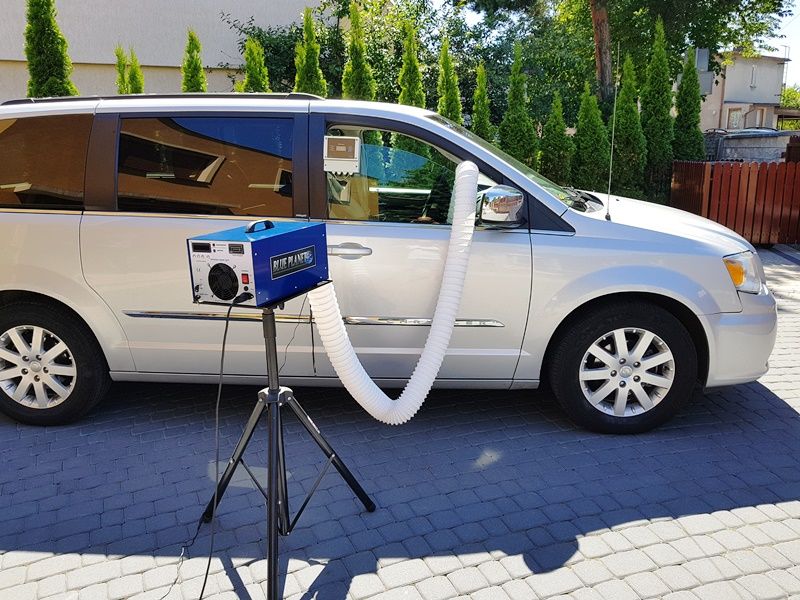- How to choose an ozone generator
- About ozone
- coronavirus
- Water ozonation
- Ozonation of fruit and vegetables
- Contact
- Vehicle ozonation
- Ozone concentration
- Ways of ozonation
- The use of ozone in industry
- Air Ozonizers
- Ozonation of cereals
- Ozone treatment in the meat industry
- Ozonation in cold rooms
- Fire - ozonation
- Ozone breakdown in water
- Allergy
- Ozone compatible materials
- Decontamination of air conditioning with ozone
- Ozone water treatment
- Home ozone generator
- Mushrooms
- Sewage ozonation
- Ozonation of hotel rooms
Ozone treatment in allergies
Allergies to dust and mites lurk in all enclosed spaces. However, do not panic, because there is a way for every enemy. Dust is dried small particles of food, mold spores, parts of insects (their secretions and excreta also), pollen, shreds of fibers or fabrics, powders, powders, hair, exfoliated human epidermis, etc. His presence at home is not welcome - not only from because of its unsightly appearance. House dust causes many unpleasant ailments, through which it activates, among others inhaled dust allergy. Rugs, books, carpets and bedding are one of the largest concentrations of dust. Allergy to dust is unfortunately manifested throughout the year. However, the ailments intensify in the autumn and winter, when we use radiators and radiators. They dry not only the air, but mainly the mucous membranes of the respiratory tract. The mucous membranes that are impaired in this way are not able to protect your body against allergens. That is why it is worth to effectively limit your enemy's actions. Allergy to dust causes the following symptoms: allergic has tearful and swollen eyes, itchy nose, runny nose, difficulty breathing, attacks of sneezing in the morning, migraine headaches, skin rashes, asthma.

Doctors agree that even infants and young children can suffer from allergies. The more dust mites in the dust, the more severe allergic attacks can be. Children are more exposed to the harmful effects of an allergen because they breathe faster - they breathe in more dust. Dust mites themselves are not dangerous. A strong allergen is the protein found in their faeces. Feces also irritate the mucous membranes of the digestive system, which can lead to gastritis and duodenitis, as well as atopic dermatitis. Mites feed on exfoliated epidermis, which is why their biggest habitat is the bedroom, especially the mattress and bedding. Ozone is a gas deeply penetrating the structure of building material, destroying mycelium growing deep into the walls, eliminating and purifying the air from fungal spores and molds. Ozone treatment is reliable disinfection and fumigation of rooms, as well as cleaning air conditioning, in which mushrooms find ideal conditions for their development . We offer you the use of the method of periodic ozonation of apartments, especially during periods of worsening of allergy symptoms autumn - winter. You will immediately notice an improvement in well-being, improved sleep, breathing comfort and effective reduction of asthma and allergic rhinitis symptoms. In moist places, the following mushrooms most often appear: 1) Genus Alternaria:
- Alternaria alternata,
- Alternaria chartarum,
- Alternaria humicola.
These species occur mainly on wood and wood-like materials, as well as plasters and coatings made of paints. They paralyze and develop on the surface. The mycelium creates a colorless, velvety coating that darkens over time and turns brown. The peculiar shell is covered by a mass of multicellular spores with a club-shaped shape. At the top of individual, dark-colored conidial stems, spores are formed in chains.
2) Genus Aspergillus:
- Aspergillus niger,
- Aspergillus fulvus
- Aspergillus versicolor.
These mushrooms occur most often on damp walls, wallpapers, paneling, plasters, and paint coatings. They are characterized by the production of initially white, at a later stage brown or gray surface mycelium. It has a diverse structure: velvet, woolly or fluffy. This genus is characterized by very abundant sporulation. Spores collected in chains form at the top of the expanding and rounded conidial shanks. The color of the conidia is varied, they come in shades from green to brown to completely black.
3) Genus Cladosporium:
- Cladosporium herbarium,
- Cladosporium fulvum.
A convenient environment for the development of this kind of mushrooms is excessively moist wood and wood-based materials, wallpapers, paints as well as paper and packaging materials. The characteristic gray-brown or green-brown mycelium is an external symptom of infestation of the material by this group of fungi. Conidial stems have a tree-like branch shape, and at their ends very numerous conidial spores are formed in the chains, which are usually single-celled (sporadically 2-4), with an egg-shaped shape, smooth texture and olive color.
4) Type of Fusarium:
- Fusarium moniliforme,
- Fusarium oxysporum.
The Fusarium genus most often develops on walls covered with oil or emulsion paints as well as plasterboard walls, plasters, wood and wood-like materials. In this group of fungi, structural elements are biodegraded through them, because they break down mainly cellulose. Symptoms of infection by pathogens are abundant light yellow, sometimes pinkish or red mycelium. The first type of spores has a sickle shape, and is equipped with numerous transverse septa (macroconidia). The second type of spores are unicellular, elliptic microconidia. Macro and macroconidia are formed on branched conidial stems
5) Genus Penicillium (approx. 140 species)
- Penicillium brevicompactum,
- Penicillium cyclopinum,
- Penicillium commune.
Penicillium inhabits damp walls and their finishes (plasters, paint coatings from oil and emulsion paints, paneling and wallpapers). In the first stage, colorless, woolly mycelium appears on the infected elements, which develops on the surface. Mushrooms produce conidial stems many times branched, and at their ends spores accumulate in chains. At high magnification, these mushrooms look like a brush, hence they are commonly called brushes. The colors of the spores are very different: black, green or gray, this feature makes it easier to distinguish with which species occurs in the home.
6) Genus Trichoderma:
- Trichoderma viridae,
- Trichoderma koningii.
It inhabits damp wood, wood-like materials and paneling. They are characterized by the production of a loose, wadded, colorless mycelium, which under the influence of time turns yellow-green and covers the entire mass of spores. The conidia are focused on the shafts that widen downwards. Spores are globular sometimes ellipsoidal in shades of dark green.
7) Genus Turula
- Turula murorum,
- Turula herbarium.
The fungus is mainly found on damp walls, plasters, paint coatings and varnished surfaces as well as materials made of pulp. A characteristic feature is the blue-gray mycelium bloom that breaks down over time into spherical spores called oids. Oidia have thick cell walls in black. Depending on the substrate, the fungi cause surface or deep degradation.
8) Species Stemphylium botryosum
The pathogen develops on walls, plasters, paint layers and wallpapers, as well as in wood. Mycelial growth occurs on the surface. In the initial phase it is colorless, later it turns gray-green with a black or brown shade. The conidial stems end in the apical part or on the side with a spore chain. Conidia spores are divided into chambers similar to those of the Alternaria fungi. They are distinguished by the only more angular shape.
9) Species Aureobasidium pullulans
It develops on oil and emulsion paints. It can also inhabit wood, wallpapers and also on food products. The fungus causes surface biodegradation. On the inhabited elements of the structure it produces a mycelium resembling a black coating. Mycelium hyphae have numerous septum. They form chlamydospores - hyphae thickenings, i.e. spores. Conidial spores are oval and are formed by budding.
10) Species of round hair (Chaetomium globusom)
It inhabits damp wooden elements. It can also affect walls and plasters, surfaces covered with paint, paneling and wallpapers. At high humidity, it leads to gray distribution of wooden elements (tissues are degraded to a depth of 1-2 cm). The affected surfaces are covered with mycelium in olive-black color. The resulting raids are made of mycelium rushing over the surface. Spores of a spherical shape, 0.5-1.0 µm in size, are produced inside the black surroundings formed among hyphae mycelium. An estimated 25% of flats are exposed to allergens and other metabolites of fungal origin. For the first time, fungal damage was estimated for the first time in the Netherlands in 1965 by Eleonore H. Hueck van der Plas. The researcher then stated that about 2% of the materials are broken down. Research carried out in Poland in 1996 showed that the estimated losses due to fungi in living quarters amounted to PLN 1084 million. It is currently believed that damage caused by the destructive activity of pathogens may even exceed 5% of GDP.

